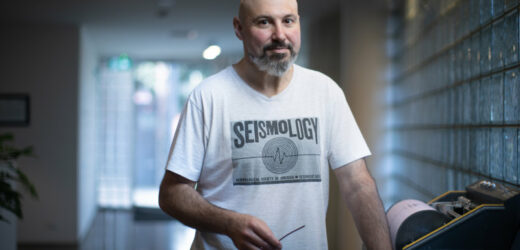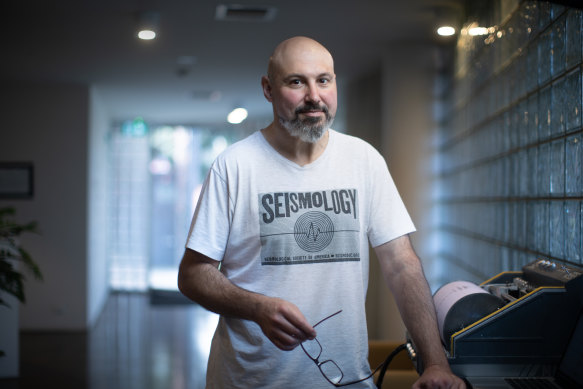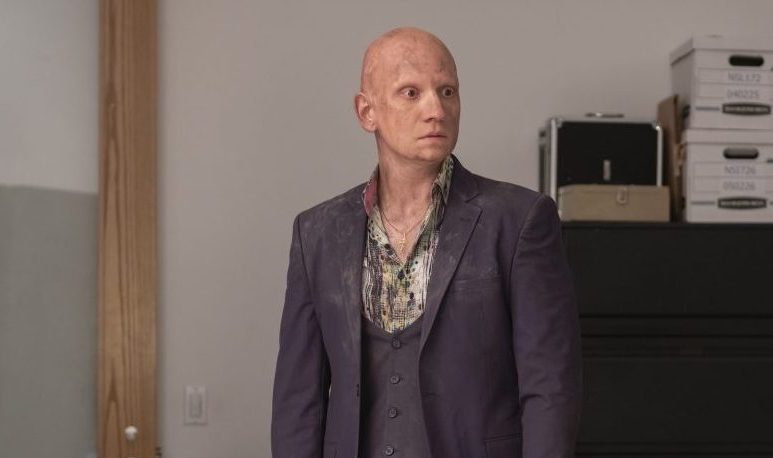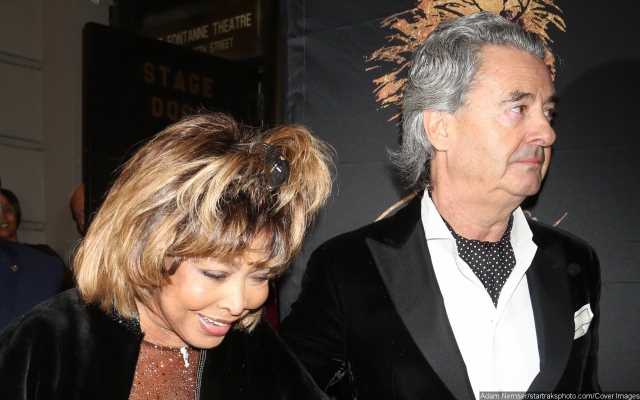Save articles for later
Add articles to your saved list and come back to them any time.
Being a seismologist in Melbourne can be pretty exciting, particularly when an earthquake – the biggest one to shake this city in more than a century – hits just 20 minutes before your birthday.
My wife, son, twin daughters and my dog Cinnamon all woke to the tremor, whose epicentre was about 25 kilometres from my home. I’d just fallen asleep when I was woken and immediately ran down to the computer to work out where and how big the earthquake was.
Adam Pascale, chief scientist at the Seismology Research Centre.Credit: Simon Schluter
The magnitude 3.8 earthquake that shook Melbourne on Sunday night was the largest tremor to have its epicentre near the city in more than 120 years, when a magnitude 4.5 quake was recorded in Port Phillip Bay in 1902.
While it feels like all the action has happened only recently, that’s not really true. The rate of these earthquakes occurring, on a geological timescale, is within expected parameters.
I started working at the Seismology Research Centre as a summer job about 30 years ago and never left.
Early on, I did really basic things like changing the paper on those drum recorders that we used to use. Later, I started doing some fieldwork and now, I help run a network monitoring most of southeastern Australia for earthquakes.
I think most Melburnians would be surprised to know we’re recording 30 to 40 earthquakes every week, mainly because they are not felt very often.
Victorians feel them maybe once every month or two. Recently, we had a small earthquake that rattled parts of Melbourne’s south-east.
While Sunday’s seismic event was about 100 times smaller than the magnitude-5.9 tremor that shook Victoria in 2021, it occurred much closer to the CBD.
I was working from home last time, and ever since I’ve tried to ensure earthquake information gets out to as many people as possible, as quickly as possible.
Science communication via social media is now an important part of my job now, particularly when an earthquake hits.
Last night, just as I was turning 52 years old, I fumbled around on Twitter and managed to go “live” for the first time in two years.
About 22,000 people jumped on to watch me ramble on and try and figure out what was happening in real time.
I was able to get a preliminary location and magnitude calculated within minutes, and then looked at our historical database to see what this meant for the region.
It certainly stands out as one of the most significant earthquakes in Melbourne’s recorded history.
Many want to know why the frequency of felt earthquakes here seems to be increasing. Many ask: after a lifetime of nothing, why are we suddenly feeling earthquakes?
People are now able to share information much more quickly, so smaller earthquakes are reported through social networks.
Earthquakes that are widely felt have always happened, perhaps only once or twice a generation in Australia.
They will continue to happen, so this acts as a good reminder for people that Australia does indeed have earthquakes and that we should remember to drop, cover and hold on if we feel strong shaking to avoid injury from falling objects.
Adam Pascale is the chief scientist at the Seismology Research Centre.
The Morning Edition newsletter is our guide to the day’s most important and interesting stories, analysis and insights. Sign up here.
Most Viewed in National
From our partners
Source: Read Full Article



